As devoted pet owners, our primary goal is to ensure the utmost care and happiness for our beloved animals. Yet, amidst the wealth of information available, numerous myths persist, steering us away from the best practices and possibly jeopardizing our pets’ health. These myths range from misguided nutritional advice to misinterpretations of animal behavior.
In this article, we will dissect and debunk 19 common pet care myths that could be hindering the well-being of your furry, feathered, or scaled friends. By addressing these myths, we aim to arm you with reliable knowledge and enhance your pet care routine. Join us as we explore these myths, clarify misconceptions, and help you become a more informed and conscientious pet owner. Let’s challenge the status quo and foster a safer, healthier environment for our pets.
Your dog’s mouth is cleaner than your own
Defiant to popular belief, a dog’s mouth is not cleaner than a human’s. Human and dog mouths contain millions of bacteria and microbes, with studies suggesting that both species simultaneously have around 600 types of bacteria in their mouths.

While dog saliva does contain enzymes that can help break down harmful bacteria, it also has its own set of bacteria that can cause infection and disease. Moreover, dogs may also harbor harmful bacteria that can be transmitted to humans, especially if they have poor dental hygiene or eat raw meat.
Black cats are bad luck
The belief that black cats bring bad luck is a common misconception. Contrary to popular belief, many cultures consider black cats a symbol of good luck and prosperity. For instance, in Scotland and Japan, black cats are believed to bring good fortune to the household where they reside.
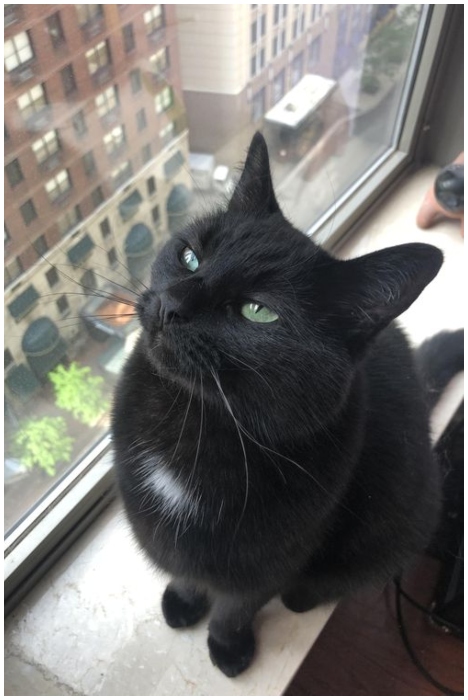
Even in the maritime world, sailors would choose black cats to get their ships aboard as they were thought to protect the vessel from treacherous weather conditions. Moreover, families of sailors and fishermen have kept black cats as pets to safeguard their loved ones at sea. This highlights the positive connotation of black cats in various cultures and traditions, debunking the myth that they bring bad luck.
Cats drink milk
Contrary to popular belief, cats should not consume milk as they are lactose intolerant. While it’s common to associate cats with drinking milk, it is a myth that can harm feline health. Milk consumption can cause stomach discomfort, diarrhea, and even cat dehydration. Although kittens can digest their mother’s milk, their digestive system loses the ability to break down lactose as they grow older.

Instead of milk, cats should have access to clean drinking water at all times. Suppose you want to treat your feline friend. In that case, many cat-friendly snacks and treats that are safe and nutritious for their consumption are available. By avoiding this misconception, we can help keep cats healthy and happy.
Dogs are colorblind
The commonly held belief that dogs are completely colorblind is not entirely true. While it’s true that dogs can’t see as many colors as humans, their retinas can distinguish some colors. Research suggests that dogs are primarily dichromatic, meaning they can see shades of blue and yellow but have difficulty distinguishing between red and green. They also have fewer color receptors than humans, making their color vision less detailed.

Despite these limitations, dogs can still distinguish between some colors and use their visual abilities to navigate their environment. Moreover, their other senses, such as their acute sense of smell and hearing, compensate for any limitations in their vision.
You can’t teach an old dog new tricks
The old saying goes, “You can’t teach an old dog new tricks,” but this is far from the truth. Dogs can learn new tricks at any age! In fact, training can bring new experiences and enrichments to your dog’s life, regardless of age. As dog’s age, their bodies and minds change, and they may require more patience and care during training. However, with the right approach and positive reinforcement, you can teach your senior dog new tricks to keep them mentally stimulated and physically active.

Moreover, training can also help improve your dog’s behavior and reinforce positive habits. So, don’t let age discourage you from teaching your dog new things. Keep training your furry friend and enjoy the benefits of a happy and engaged companion, no matter how old they are.
Cats always land on their feet
The common belief that cats always land on their feet is untrue. While cats can right themselves mid-air, there is still a risk of injury if they fall from a significant height.

Cats have a reflex that allows them to twist their bodies quickly, enabling them to land on their feet most of the time. However, this does not guarantee a safe landing, especially if the fall is from a considerable height. Even shortfalls can result in injuries, so keeping your feline companion safe is essential.
Breeds on the banned list are always aggressive
It is a common misconception that breeds on the banned list are always aggressive, but this is false. The temperament of any dog depends on various factors, including upbringing, socialization, and training. According to the Centers for Disease Control and Prevention (CDC), no breed is inherently dangerous or vicious.

In fact, research conducted by the American Temperament Test Society found that many dogs labeled as “aggressive breeds” displayed friendlier behavior than breeds without such a label. This underscores the importance of proper socialization and training in shaping a dog’s behavior, regardless of its breed.
A warm nose means your dog is sick
It is a common belief that a warm nose in dogs means they are sick, but this is not necessarily true. The temperature of a dog’s nose can vary based on several factors, including their activity level, surroundings, and even the time of day.

While a warm nose can sometimes indicate illness, it is not a reliable indicator. Instead, suppose you’re concerned about your dog’s health. In that case, looking for other symptoms such as lethargy, lack of appetite, or vomiting is essential. These signs can better indicate whether your dog is sick or not.
Indoor pets don’t need heartworm prevention or regular trips to the vet
It is a common misconception that indoor pets do not require regular veterinary visits or heartworm prevention. However, indoor pets are vulnerable to various communicable diseases such as distemper, leptospirosis, and upper respiratory infections, which can be transmitted through contact with contaminated surfaces or infected animals like raccoons.
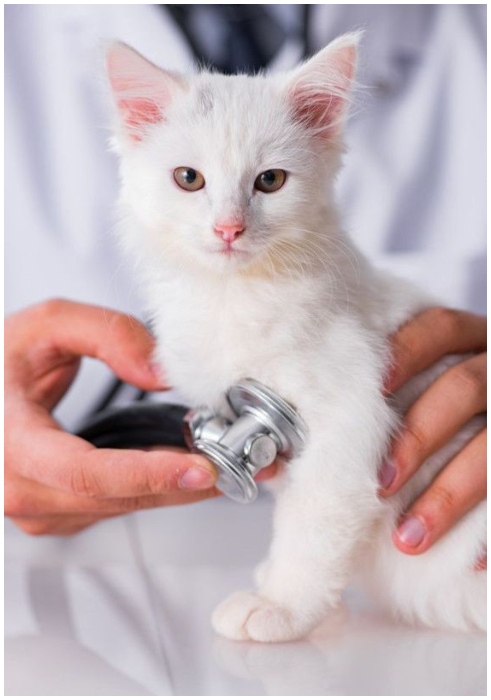
The American Heartworm Society has also reported that one in four cats infected with heartworm disease were indoor cats. Therefore, it is essential to provide regular veterinary care for all pets, regardless of their living conditions. Regular check-ups can help identify any underlying health issues early on and prevent the spread of communicable diseases.
Cats purr, and dogs wag their tail only when happy
Contrary to popular belief, a cat’s purr and a dog’s wagging tail are not always indicators of happiness. While cats may purr when content, they can also do so when anxious or nervous. Similarly, dogs may wag their tails to show excitement, stress, or aggression.

Observing an animal’s body language is essential to accurately interpret its emotions and intentions. Factors such as ear position, eye contact, and body posture can provide additional context to determine their mood. Understanding a pet’s behavior can also help prevent misunderstandings and potential conflicts.
Rabbits are low-maintenance pets
It is a common misconception that rabbits are low-maintenance pets. However, adopting a rabbit is a long-term commitment as they have an average lifespan of ten years. Rabbits require several hours of exercise outside their enclosure each day and a balanced diet of fresh vegetables.

Moreover, a rabbit’s teeth and nails never stop growing. It is essential to manage them properly to ensure their health and comfort. Additionally, specialized veterinary care is necessary for rabbits, including yearly check-ups, as they are prone to specific health issues that require prompt attention.
Rabbits should eat lots of carrots
Contrary to popular belief, carrots should not be a staple food for rabbits. Carrots are high in sugar and lack the essential nutrients for a healthy diet. While carrot tops can be given as a little and limited treat, they should not be a significant part of a rabbit’s diet.
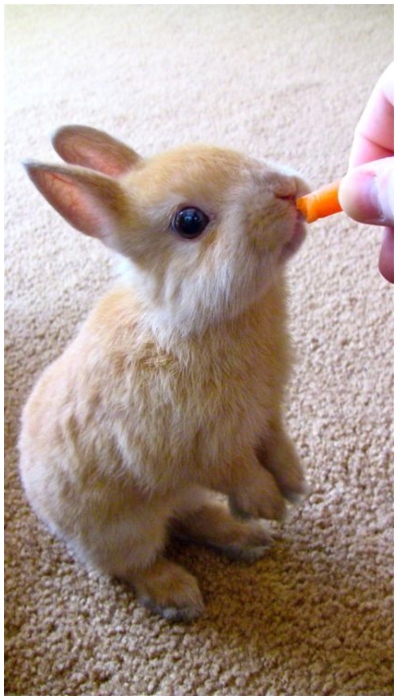
A rabbit’s primary food source should consist of high-quality grass hay, such as Timothy hay, which should be available 24/7. This hay type is crucial to maintaining a healthy digestive system and preventing dental and gastrointestinal problems.
Dogs eat grass when they have an upset stomach
Contrary to popular belief, dogs do not eat grass to induce vomiting when they have an upset stomach. Nor do they eat grass to fulfill a nutritional deficiency. A survey of over 1,500 pet parents found that only 8% of dogs showed signs of sickness before consuming grass, and only 22% of dogs that ate grass vomited afterward.

So why do dogs eat grass? Scientists suggest that dogs and cats may eat grass due to biological reasons. For example, eating grass could help wild dogs and cats purge their bodies of parasites. However, there is no conclusive evidence to support this theory.
Dogs can detect disease by sniffing
Dogs’ sense of smell is so powerful that they can detect a wide range of scents that humans can’t, including certain odors associated with various diseases. In some cases, dogs have been trained to detect early-stage cancer by sniffing urine or breath samples.

While there is still much to learn about the precise mechanisms by which dogs detect disease, researchers are working to harness this ability to develop new diagnostic tools and therapies for humans.
Cats can see in the dark
Cats’ ability to see in the dark is a commonly held belief. While this is not entirely accurate, there is some truth to it. Cats have better vision in low light conditions than humans, allowing them to see better in dimly lit areas.
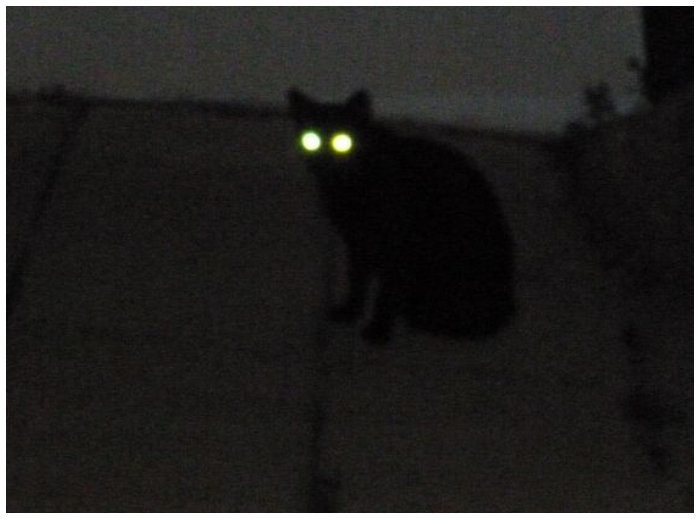
According to experts, a cat’s improved night vision is due to having more light receptors, known as rods, in their eyes. The rods are more sensitive to light, allowing them to see in low-light conditions where humans struggle. However, if all light is blocked, cats cannot see.
All human foods are off limits
While it is true that some human foods can be highly toxic to pets, not all human foods are off-limits for cats and dogs. Many fruits and vegetables can make delicious and nutritious treats with crunchy textures that many pets love to chew on.
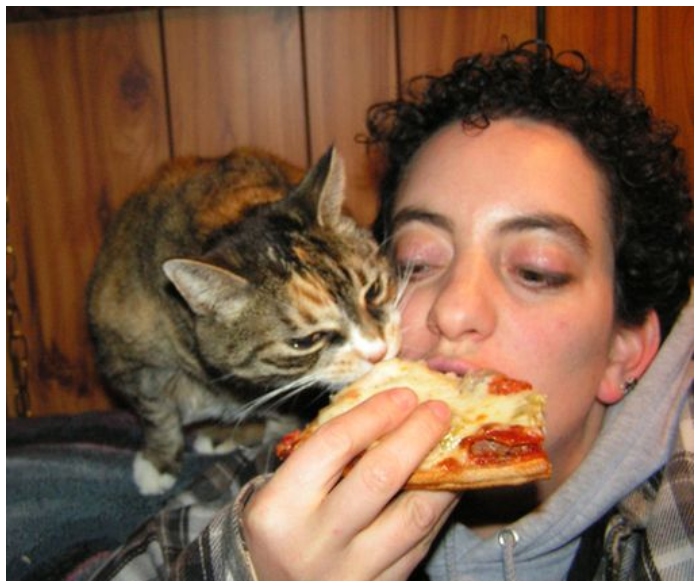
However, being judicious about which foods you share with your pets is crucial. Some human foods, such as chocolate, grapes, onions, and garlic, can be toxic and life-threatening to pets. It is essential to research and understands which foods are safe and which should be avoided before sharing any human food with your furry friends.
Some dogs and cats are hypoallergenic
It is a common misconception that some dogs and cats are entirely hypoallergenic. While certain breeds may be labeled hypoallergenic, this term is often misunderstood. It can cause individuals to believe these animals will not trigger allergies.

Hypoallergenic means the animal is less likely to cause an allergic reaction. However, allergies can still be triggered by these pets. This is because allergies are triggered by a protein found in the animal’s urine, saliva, and skin. All cats and dogs have this protein, including hypoallergenic breeds.
Cats Detecting Disease and Cancer
The belief that cats can detect diseases, including cancer, in humans has circulated among pet owners for years. While there are anecdotal reports of cats behaving unusually around sick individuals, scientific evidence supporting this ability is sparse. Cats have a keen sense of smell—far superior to humans—which might explain why they can detect certain odors associated with illness.

However, there is no conclusive research that proves cats can systematically identify specific diseases or cancers. While their comforting presence is undeniable, attributing diagnostic abilities to cats is more folklore than fact. Owners should consult healthcare providers for medical concerns rather than relying on their feline friends’ perceived instincts.
The Need for Constant Dominance
One pervasive myth in the pet world suggests that dogs require a strict dominance hierarchy within the home to thrive. This misconception stems from outdated beliefs about canine social structures. Contrary to the notion of needing to establish an ‘alpha’ status over our canine companions, research shows that dogs benefit more from positive reinforcement and a loving relationship with their owners.

It’s the mutual respect and understanding, rather than a display of control or dominance, that truly strengthens the bond between humans and their pets. Understanding this can lead to a more harmonious and affectionate coexistence with our four-legged friends.
Shedding Light on Shedding
When it comes to pet care, the topic of shedding is often accompanied by a swirl of myths and misunderstandings. A common misconception is that only certain breeds shed, or that shedding is a sign of health issues. In reality, shedding is a natural process for most dogs, influenced by factors like breed, season, and health. It’s not breed-specific nor always indicative of health problems.

In fact, regular shedding is often a sign of a healthy coat renewing itself. Understanding the ins and outs of shedding can help pet owners better care for their furry friends, ensuring that they remain comfortable and healthy throughout the year.
All cats hate getting wet
Contrary to popular belief, not all cats hate getting wet. While some cats dislike getting wet, others enjoy splashing around in the water. Shorthair cats and cats exposed to water from a young age are often more comfortable with water and may even enjoy playing in a pool or bath. However, cats with long fur or those not exposed to water may be more hesitant or dislike getting wet.
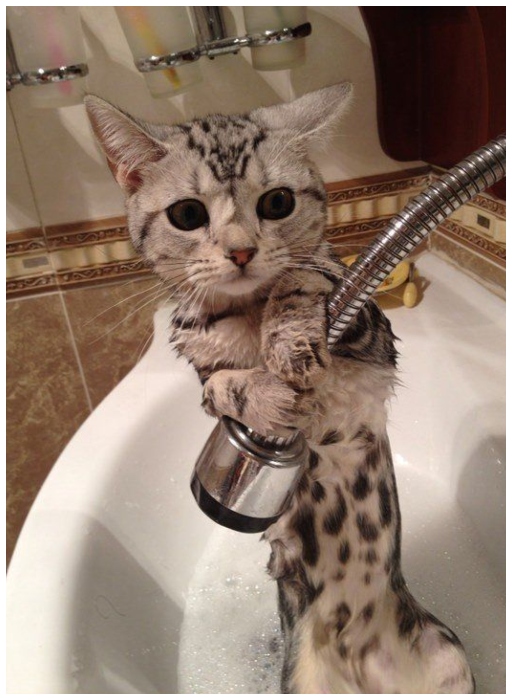
Exposing your kitten to water from a young age is important to help them become accustomed to the sensation. Gradual exposure to water and positive reinforcement can help create a positive association with water and reduce fear or anxiety.
Dogs get enough exercise when playing in the backyard
Contrary to popular belief, playing in the backyard alone is an insufficient exercise for dogs. Dogs require regular physical activity, mental stimulation, and social interaction to stay healthy and happy. While having a fenced-in backyard can provide a safe space for dogs to play and explore, it is not enough to meet their exercise needs, especially for larger breeds.

Regular walks or jogs can help provide essential cardiovascular exercise and mental stimulation for dogs, as well as opportunities to socialize with other dogs and people. Engaging in interactive play with your dog, such as fetch, tug-of-war, or puzzle games, is also important to provide mental stimulation and strengthen your bond with your pet.
Goldfish can live in a bowl
Contrary to popular belief, goldfish cannot live in a bowl. Keeping a goldfish in a small bowl is not only inhumane but can also be harmful to the fish’s health and well-being. Goldfish require a minimum of 20 gallons of water per fish to swim and thrive.

Small bowls lack the space and filtration necessary to maintain healthy water conditions, leading to poor water quality, stunted growth, and a shorter lifespan for the fish. Moreover, goldfish are social creatures and thrive in groups. Providing adequate space for multiple fish to swim and interact is essential.
Small pets don’t require as much effort as large ones
Contrary to popular belief, small pets require as much care and effort as larger ones. While small pets such as guinea pigs or hamsters may be less demanding than dogs or cats, they still require daily care and attention to maintain their health and well-being.
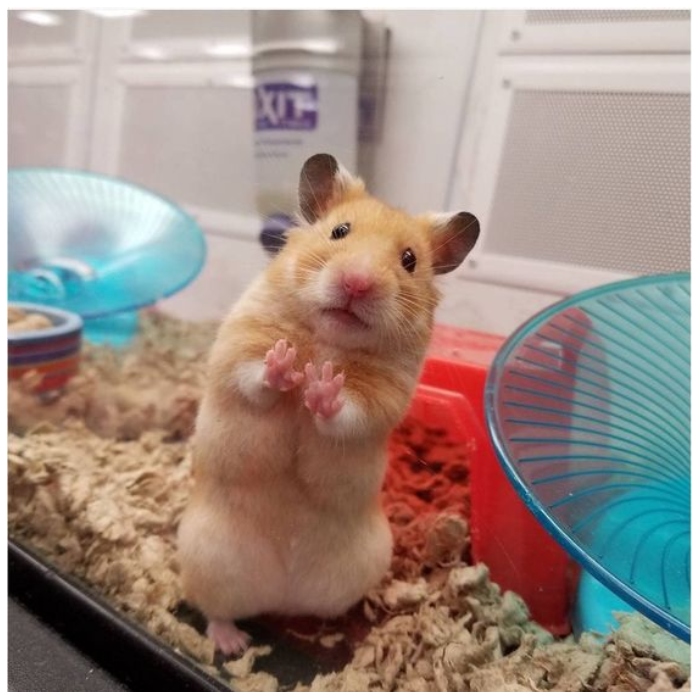
For example, guinea pigs need clean cages, fresh food and water, nail trims, regular exercise, and social interaction to thrive. Similarly, hamsters require daily feeding, enclosure cleaning, and exercise and play opportunities.
I don’t need to have my pet on prevention every month
Contrary to popular belief, pet owners should not skip parasite prevention during winter. While flea and tick activity may decrease in colder temperatures, parasites only take one mild day to become active again.
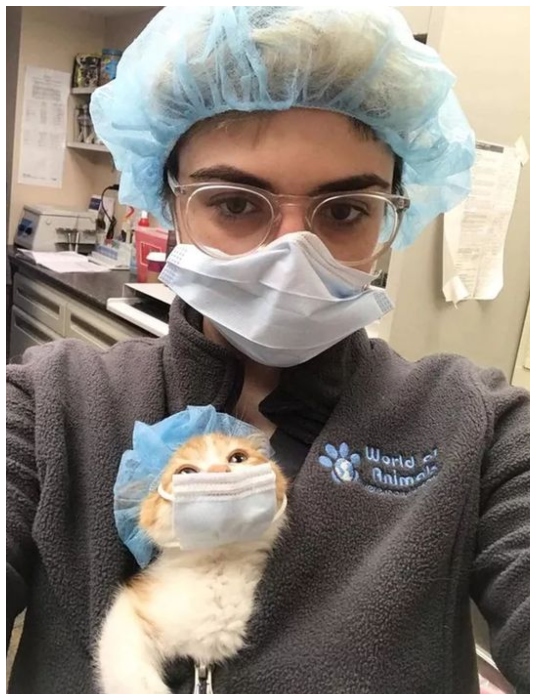
Therefore, it is crucial to keep your pet on prevention year-round to protect them from flea and tick infestations, intestinal parasites, heartworms, and tickborne diseases such as Ehrlichia and Lyme disease.
Grain-Free pet food is healthier
Defiant to popular belief, grain-free pet food diets are not necessarily healthier for your pet. While thousands of pet diets are available, dogs and cats do not have food allergies to grain like humans.

Grain-free diets are often higher in carbohydrates from sweet potatoes, apples, and other ingredients. These added carbohydrates can lead to weight gain and other health problems in pets.
Probiotics are only for people
Contrary to popular belief, probiotics are not just for humans. Pet-specific probiotics can benefit your furry friends, especially if they suffer from stress-related gastrointestinal symptoms or chronic gastrointestinal issues.

For instance, Purina’s FortiFlora, available in both canine and feline versions, is highly recommended by veterinarians to promote a healthy gut and digestion in pets. Purina also offers a new probiotic called Calming Care, specifically formulated to help soothe anxious behaviors in dogs.
Dawn dish soap is an appropriate flea control
Contrary to popular belief, Dawn dish soap is not an appropriate long-term solution for pet flea control. While it may kill fleas on contact, it does nothing to prevent re-infestation.
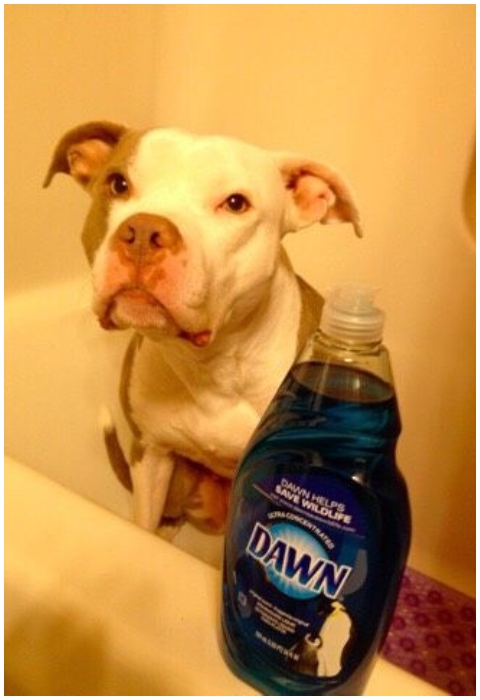
Repeated use of Dawn dish soap can also cause skin irritation, particularly if the skin is inflamed from itching or scratching. Therefore, it is essential to use shampoo specifically formulated for pets to balance the pH of their skin and prevent further irritation.
Crate training isn’t a necessity for my pet
Contrary to popular belief, crate training is not just convenient for pet owners. It can also be crucial for a pet’s future health and well-being. In cases of hospitalization, orthopedic injuries, or post-operative recovery, crate-trained pets can remain calm and reduce the risk of further injury or complications.

Additionally, crate training can help pets with separation anxiety feel more secure and comfortable alone. It is important to note that crate training should be done before any anxiety develops to avoid causing further distress to your pet.
Dogs should chew bones; it’s good for their teeth
Contrary to popular belief, giving your dog bones to chew on can harm their health. Not only can they damage their teeth, but if swallowed, bones can also become lodged in their stomach or intestines, requiring surgical removal.
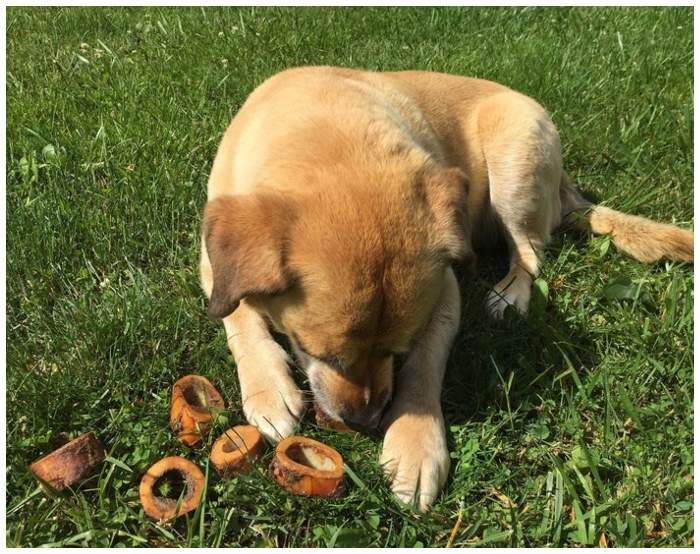
Instead of bones, consider giving your dog dental chews with the Veterinary Oral Health Council (VOHC) seal of approval. Products like CET Hextra Rawhide Chews, Veggiedents, Oravet Chews, and Greenies can help prevent tartar and plaque buildup and are highly digestible.
Ringworm is a worm
Contrary to its name, Ringworm is not caused by a worm. Instead, it is a skin infection caused by a fungus called dermatophyte. While it can cause a circular rash, it doesn’t always manifest in that way.

Moreover, Ringworm is highly contagious to other animals and humans, making it a zoonotic infection. People can catch it from their pets if proper hygiene and prevention measures are not taken.
A “dog year” is the same as seven human years
The idea that one dog year is equivalent to seven human years is a commonly held belief, but it is not entirely accurate. While this calculation has some basis, many other factors impact how quickly dogs age. Breed and size are significant factors in how quickly dog ages.

Larger breeds tend to have shorter lifespans and age faster than smaller breeds. For example, one dog year for a large breed can be equivalent to 15 human years, while one dog year for a small breed can be equivalent to seven.
My pet needs daily vitamins in addition to their dog food
Pets, like humans, require a balanced and nutritious diet to stay healthy. Suppose your pet is fed a high-quality diet that meets all its nutritional needs. In that case, they do not require additional vitamins or supplements. However, suppose your pet shows symptoms such as itchy skin or arthritis. Your veterinarian may recommend specific supplements to help manage these issues. For instance, a fish oil supplement can help soothe itchy skin.

It’s essential to consult your veterinarian before giving your pet any vitamin or supplement, as some can be harmful or even toxic to your pet. A balanced diet and regular veterinary checkups are the best way to keep your pet healthy and happy.
Pet hair is responsible for causing allergies
Contrary to popular belief, pet hair is not responsible for causing human allergies. Allergies are caused by a protein found in pet saliva, skin, and urine, which can trigger an allergic reaction in susceptible individuals. Pet hair is no different from the hair on our heads and is not a significant allergen.

Whenever pets shed their fur, they also shed pet dander and flakes, which can be a source of allergens. Pet dander, which consists of microscopic skin flakes, is the primary cause of allergic reactions in humans. Moreover, pet licks can also trigger allergic reactions in some individuals, as their saliva contains an allergenic protein.
Pet Puppies enter the world deaf and blind
Newborn puppies rely heavily on their sense of smell in their early weeks of life. Not only do they use their noses to locate their mother’s milk and warmth, but they also use their sense of smell to communicate with their littermates, detecting subtle chemical signals that indicate hunger or fear.

As their eyes and ears develop, puppies become more adept at interpreting visual and auditory cues from their environment.
Dogs can learn over 1,000 words
Research from universities like Duke and Yale has shown that dogs have an impressive vocabulary and can understand much of what we say, even if they can’t respond with words.

However, claims that dogs can learn over 1,000 words are likely exaggerated. Most dogs can learn around 165 words, and only a few exceptional dogs have been shown to understand over 200 words.
Butt sniffing – a dog’s handshake
Dogs greet each other by sniffing each other’s butts, where pheromone-producing glands reveal information about gender, diet, and health. While this behavior may seem odd to humans, it’s a natural part of canine communication.

However, this doesn’t mean that dogs should greet humans in the same way – there are other, more socially acceptable ways for humans and dogs to say hello.
Organic pet food – healthiest choice?
While organic pet food may be marketed as the healthiest choice, studies have shown little difference in nutrient levels between organic and non-organic pet food.

Instead of focusing solely on whether a pet food is organic, look for labels with the Association of American Feed Control Officials’ nutritional adequacy statement to ensure that the food meets minimum nutritional requirements.
Raw food – a pet’s prime diet?
While proponents of raw food for pets claim that these diets offer numerous health benefits, including improved dental health and reduced risk of certain diseases, little scientific evidence supports these claims.

Additionally, raw diets carry some risks, including the potential for bacterial contamination and nutritional imbalances. Pet owners considering a raw food diet for their pets should consult a veterinarian to ensure the diet is appropriate and balanced.
Meat-Lovers vs. Plant-Powered pooches
While dogs can digest and derive nutrients from plant-based foods, ensuring their diets are balanced and providing all the necessary nutrients are essential.

Dogs have specific dietary requirements for protein, fat, and certain vitamins and minerals, which can be met through animal- and plant-based sources. Pet owners should work with veterinarians to develop a nutritionally complete and balanced diet for their dogs.
Microchip companies can always see my pet’s location
While microchips are an important tool for pet identification, they are not a substitute for GPS tracking devices. Microchips are implanted under the skin and contain a unique identifier that can be used to link a lost pet with its owner. Still, they do not provide real-time tracking information.

GPS tracking devices, on the other hand, can help pet owners locate their pets in real-time, making them a valuable tool for keeping pets safe and secure.
Indoor cats don’t need a microchip
While indoor cats may be less likely to get lost than outdoor cats, they can still escape or become lost. Microchips are a safe and effective way to ensure that indoor cats can be quickly reunited with their owners if they get lost.

Additionally, indoor cats can benefit from having identification tags on their collars, which can provide additional information to anyone who finds them.
Bribing is the same as treating
While treats can be useful in dog training, they should be used sparingly and in conjunction with positive reinforcement techniques. Overuse of treats can lead to obesity, other health problems, and reliance on treats for obedience.

Positive reinforcement training techniques, which involve rewarding desired behaviors with praise and occasional treats, are more effective and can help build a stronger bond between dogs and their owners.
Pets go through “phases”
Cat, dog, and rabbit owners commonly think that their pets go through certain “phases,” like the “terrible twos” or adolescence. However, changes in a dog’s behavior are more likely a result of training, age, or external factors, rather than temporary “phases.”

Understanding and addressing the underlying causes of a dog’s behavior can help owners develop effective training strategies and strengthen their bond with their pets.
People Can’t Get Fleas From Their Dogs
Contrary to popular belief, humans can indeed get fleas from their dogs! Fleas are commonly associated with pets since they thrive on dogs, cats, and other warm-blooded animals, where fur and feathers provide a perfect environment for hiding and reproducing. These tiny, wingless, brown parasites survive by biting skin and consuming blood.

However, fleas can bite humans too. Although they won’t reside on your body, you may still experience side effects. Fleas can jump up to 13 inches, making it possible for pets or other animals to transfer them to you.
Garlic is a Great Solution For Fleas and Ticks
Garlic might be effective against vampires in folklore. Still, it’s definitely NOT a reliable treatment for fleas and ticks in dogs. Sadly, this myth is widely spread online.

Not only does garlic fail to eliminate fleas and ticks, it can also cause hemolytic anemia. This rare condition occurs when the body destroys its red blood cells. While not all dogs that consume garlic will experience this, feeding your pet garlic risks their health. Treating hemolytic anemia is costly and often requires several days of hospitalization and numerous blood transfusions.
Rescue Dogs are Problematic Because They’re All Damaged; There’s a Reason They’re In Rescue
Many people assume that rescue dogs are primarily surrendered due to behavioral problems. While this is true in some cases, other more common reasons include Puppy Mills – Thousands of dogs are rescued from illegal puppy mills each year; Life Changes – Death of an owner or owners becoming physically incapable of providing proper care; High Costs – Pet parents underestimate the cost of ownership or are unable to afford unexpected medical treatments; Lack of Time – Job obligations or changing life circumstances, such as divorce or a new job;

Housing Restrictions – Landlords may not permit tenants to have dogs or certain breeds in a new residence; Strays or Abandoned – Most commonly seen in developing countries but occurs worldwide. The unknown history of a rescue dog shouldn’t deter you from adopting. Older dogs offer many advantages, as their personalities are already established. You can ensure they fit you when you meet one at your local SPCA or Humane Society.
Dogs Need Annual Vaccinations
While rabies vaccines are required in most states, other vaccines are optional. They should only be administered to dogs that genuinely need them. Non-core vaccinations may not be essential for every dog, as their necessity depends on their lifestyle. Factors you should consider include geographic location, exposure to other dogs, and underlying diseases.

For example, suppose dogs don’t interact with others in daycare or boarding. In that case, there’s no need to vaccinate them for influenza and bordetella, says Morgan. Additionally, the leptospirosis vaccination should only be given to dogs exposed to the disease, a bacterial infection spread through the urine of wildlife and rats. It’s crucial to note that some vaccines may deliver exemption for more than a year, so annual vaccinations are not always necessary. “Distemper and parvovirus vaccinations may give exemption to pets for 5 to 7 or more additional years,” says Experts.
Dogs Should Be Allowed to Lick Their Wounds
Many pet owners believe that letting dogs lick their wounds promotes healing. While saliva contains enzymes that aid healing, dogs’ mouths also harbor bacteria that may cause infection.
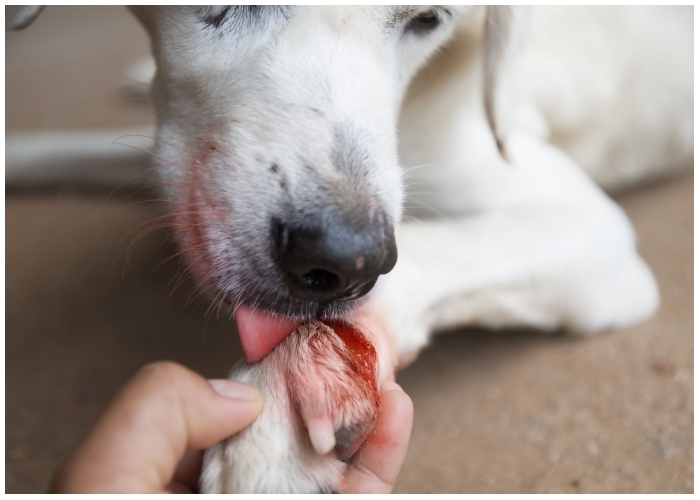
Expert explains that although licking can help remove dirt from a wound, it can irritate the wound, delay healing, and even remove stitches a veterinarian places. The best approach is to prevent your dog from licking its wounds, even if it requires using an E-collar.
Cats Have 9 Lives
Unfortunately, like humans and other animals, cats have only one life. The myth of cats having nine lives may stem from their incredible agility and ability to escape dangerous situations.

There are various stories about the origins of this myth, but its impact is more important. Some people who believe in this myth may neglect their cats’ medical needs, assuming they are invulnerable to harm. This misconception can expose cats to serious health risks.
Cats and Dogs Are Inevitable Enemies
TV shows and movies often portray cats and dogs as perpetual adversaries. Still, as Galaxy points out, this isn’t always the case. Cats and dogs can coexist peacefully or at least tolerate each other. “Of course, we have two different species, and when dealing with distinct species, there is bound to be a communication gap,” Expert said.

“That’s why it’s our responsibility as pet owners to be ambassadors—helping to bridge that communication gap between the two species.” By understanding each animal’s body language, needs, and preferences, you can create an environment where both pets can thrive and develop a harmonious relationship.
Indoor Cats Are Immune to Illnesses
Although outdoor cats face higher risks of contracting certain diseases due to exposure to infected prey or stray cats, this doesn’t mean indoor cats are entirely immune to health issues. The vet explains indoor cats can still develop obesity, dental disease, diabetes, hyperthyroidism, cancer, and arthritis.

“Keeping your cat indoors will help reduce their risk of contracting parasites since they won’t be preying on small animals like birds,” she said. However, indoor cats still require proper care and attention to maintain optimal health. To ensure your cat’s well-being, the vet recommends regular visits to the veterinarian for checkups, vaccinations, and preventive care.
Worms in Pets Are Always Visible in Their Poop
Contrary to popular belief, in most cases, animals with worms will only shed microscopic eggs in their feces rather than whole worms. The exception is tapeworms, which release small, rice-like segments visible to the naked eye. If you see entire worms in your pet’s poop, they might have a heavy infestation.

To diagnose and treat your pet’s worm infection accurately, provide a fresh stool sample to your veterinarian for microscopic examination. This will help identify the worm infecting your pet and determine the most effective deworming medication. Regular deworming, proper hygiene, and preventive care can keep your pet healthy and worm-free.
A “Well-Behaved Canine” Will Not Bite
A properly trained dog from a caring family can still bite just as any other dog can, even if it has not displayed aggressive tendencies. Numerous scientific studies have investigated the reasons for this occurrence, with various contributing factors.

Dogs may bite for many reasons, such as being frightened or caught off guard, feeling trapped, or protecting their territory or loved ones. A dog does not need to be characterized as “vicious” to exhibit biting behavior.